|
Shortly after the MV Hondius dropped anchor in Mikkelsen Harbour, I completed my 39 minute dive and chose to go ashore to join the land expedition. These very special Brush-tailed penguins include Gentoo, Chinstrap and Adélie Penguins. While following all of the strict guidelines like 'always give the right-of-way' to all penguins, keep at least 15' distance, or do not kneel or sit on the ground to avoid the spread of bacteria, etc., I had a wonderful time mingling with these adorable animals. Because our trip was the last of the 2022-2023 season, most of the adults had already headed out to sea. The Gentoo's still on land were the young adults molting and preparing for their trip into the sea. While easily recognized by the white stripe extending across the top of its head, Gentoo's also have a bright orange-red bill. Their webbed feet are pale whitish-pink. They also have a fairly long prominent brush like tail - hence the name. The chicks have grey backs with white fronts as you can clearly see in my images. Gentoo's can grow to 28 to 35 in, making them the third-largest species of penguin after the King and Emperor Penguins. Breeding colonies are usually located on ice-free surfaces. Settlements can be located directly on the shoreline or considerably inland. With the onset of global warming, which is making rain versus snow more common, it will have a negative impact over the next many decades.
0 Comments
On the morning of March 18th, many of the Oceanwide passengers went ashore to explorer Devil Island and mingle with the penguins and seals. The divers had our first opportunity to enter into the icy waters of Antarctica, complete our checkout or test dive, and do some underwater exploration. Scuba diving in Antarctica is extreme diving. Water temps are at or below 32 degrees, surface winds that can reach deadly dangerous speeds of over 100 mph, and visibility can be very poor. Overall, though, except for the high winds and super cold water, I’ve experienced many dangerous and extreme conditions conducting underwater research locally in the Salish Sea. I truly love cold-water, but being physically and mentally ready is imperative. Being ill-prepared can put your life, the lives of your fellow divers, and lives of the crew at risk. Unfortunately, some divers were emphatically ill-equipped for the extreme conditions, and at the worst possible time. Swiftly extreme high winds and hazardous conditions ensued. Quoting directly from the ships log entry; ‘Minutes after the wind gusts suddenly increased, reaching 40 to 50 knots.’ The next day it was revealed the sustained winds were actually closer to 79 knots, for as long as 90 minutes. The high winds were pushing on the Hondius forcing it to drag its anchor across the sea floor. The captain could not allow anyone to approach or board the ship for well over two hours. Once back aboard the four zodiacs, soaking wet in our drysuits, freezing from both the icy waters and subzero temperatures caused by the extreme winds, the zodiac drivers were forced to hunker down in the rough seas. The drivers attempted to shield us from the winds behind a few small icebergs but with little success. During this entire event no information was provided by the ships staff or crew. This was the only time Oceanwide Expeditions seriously dropped the proverbial ball. The next morning, I had a chance to attempt my second underwater exploration. Blown Bluff is an impressive island. The variety of wildlife underwater is minimal compared to what I am used to in the Pacific Northwest. But I enjoyed the 30+ minute experience if for only having the opportunity of diving in Antarctica. After my dive, I went ashore to spend more than 90 minutes with extremely adorable and cute Brush-tail Penguins, and a lots of seals. There are very strict guidelines when onshore with any wildlife, especially penguins. They always have the ‘right-of-way’. Penguin highways, as they are called, are clear paths for them to travel. When blocked we can stress them. We are invading their space. These animals must feed and rest up for the fast-approaching winter. A bunch of humans snapping phots causes undo stress. Also, of huge concern is the potential introduction of bird flu to Antarctica. This could devastate the penguin populations, some which are already in peril. All passengers must have their gear, clothes, dry-bags, boots, tripods, and anything else brought on shore checked and cleaned from contaminates. The transmission of bird influenza or bacteria is a very serious concern. Also, any seeds that might germinate and introduce a foreign species of grass, plant or tree is strictly forbidden. Below is a video short from my very first successful dive in Antarctica. Although I did see much, it was amazing just being in the extreme conditions. Very first dive in Antarctica • Brown Bluff
Air temperature: -1°C • Water temperature: +4°C Another entry in my photo / video series on my research trip to Antarctica. Today I'm featuring a few birds, as a true non-birder. As we steamed southward away from Elephant Island towards the Antarctic Sound and eventually the Weddell Sea, we not only spotted as many as 200 Fin Whales and a mixed group of Long-finned Pilot Whales and Hourglass Dolphins, but also Albatross, Prions, and Petrels. For hours the birders on board were in heaven, and there were many who booked this trip just for the birds. I would never claim to be a proper birder, I have too much respect for them. Just thinking about the patience needed to find, shoot and then spend hours identifying minute differences between the species makes my head hurt. I did however enjoy a few hours working alongside some experts attempting to capture that one perfect shot (which I never did). As with many animals, patterns of movement and hunting behaviors may be predictable. Out on the open ocean though, aboard a gently rocking ship moving at nearly 12 knots can provide an interesting challenge. Also, bright sunlight shifting quickly to dim cloud cover, ever-changing winds, occasional rain and even some brief snow, can all wreak havoc with photographing birds in flight.
As we were leaving Elephant Island, the first day after crossing the Drake, we spotted Fin Whales, lots of Fin Whales. These are the 2nd largest whales on the planet, Blue Whales are the largest of any animal. Both Fin Whales and Humpbacks are baleen or filter feeders. Their primary diet is Krill, a small shrimp like animal. Fin Whales can weigh as much as 80 tons and can easily reach 65' in length. Their blow can be over 25' making it easy to spot from a distance. While they are dark gray to brown, their lower left jaw is white, but the right jaw is gray. There were two whale experts aboard. Ursula Tscherter holds her Masters in MMS from the University of St. Andrews in Scotland and is Director of the Swiss-Canadian ORES Foundation. Her specialty and passion is Minke Whales, and she provided an excellent lecture on all whales. Second, Pierre Gallego is the only member of the International Whaling Commission representing Luxembourg. As we made our way south toward the Lemaire Channel, our Captain and expedition leader made a slight divergence off the Gerlache Strait toward Fournier Bay. While not the first area we spotted Humpback Whales, it was where we got our closest and best views. Fortunately, numbers of these mighty and amazing creatures have been rebounding as they've been mostly protected since 1966. Among the many interesting facts we learned, Humpback Whales are positively buoyant. Therefore, they can rest on or very near the surface, but need the thrust of their entire fluke to dive for food. The lifespan can be 80 years, and pregnancy in females can be 12 months. They may weigh as much as 40 tons; the calves may weigh up to 1 ton and 4 1/2 meters long at birth. The mother’s milk is extremely fatty, as much as 40% to 60%. They spend the Antarctic summers feeding for their long migration north. There are so many other fascinating facts I won’t bore anyone with here. One of the most is that Humpbacks can be identified from only the underside of their Fluke, much like fingerprints. My images of these whales have been logged onto - https://happywhale.com/home. If you capture images of a humpback, please submit it to HappyWhale. You may be able to track your whale around the world. Update Notice: My submission to HappyWhale.com has been paired with those of a photographer from a decade ago.
Heading south along the Antarctica Peninsula, our ship passed through the Lemaire Channel. The Lemaire Channel extends between Booth Island and the Peninsula. It measures less than 7 miles long, is nearly 500 feet deep, and at its narrowest point is barely 2000 feet wide. You can hear clearly as the many small icebergs and berglets crash and bang into the port and starboard sides of our ship’s hull. An ominous sound to those choosing to sleep in a little. Turn up the volume to get the true experience Throughout this narrow stretch of Antarctic wilderness, we witnessed rugged snow- and ice-covered peaks rising to 3,280 feet. Calving glaciers can send their icebergs into the channel, and can possibly block it completely, we were fortunate. A calving glacier would've assuredly caused huge waves within the channel, possibly damaging the rudders or propellers. In 1898, Adrien de Gerlache, a 19th century Belgian explorer first navigated this treacherous channel. He named it in honor of Charles Lemaire, who never actually explored Antarctica at all. Lemaire’s late 1800’s explorations were mostly the tropical forests of the Congo.
The Antarctic Sound is a passage separating the Bransfield Strait and Weddell Sea. Centuries of extreme winds, snow, ice, icebergs, and glaciers have scoured and gouged the landscape and shorelines leaving remarkably high peaks and deep valleys. I’m providing two images so everyone can attempt to grasp the distance between the ocean, seas, islands and peninsula being referenced. Upon my first views passing through towards the Weddell Sea, I was awed at how insignificant I am, we are, and how intimidating this world can be. Sailing on this advanced 107.6 meters long steel hulled Polar Class 6 vessel was at times almost like riding a cork bobbing on the vast treacherous waterways, moving at 12 knots. Only briefly in the beginning though, for about five hours, did we actually experience some ‘rough seas’. Exiting Beagle Channel and entering the dreaded southerly trek across the Drake Passage, we encountered sustained winds of 35 knots. Frequent gusts up to 55+ knots made for a somewhat rocky ride along the 8' to 12' seas. Much more on the seas, winds, swells from the bridge will be presented in a future Blog. Fortunately, with modern stabilizers and an excellent crew, it was mostly a pretty smooth ride. Unfortunately, a number of passengers were stricken with a severe bout of sea sickness. The NASA satellite shot included below is of the entire white frozen continent. Note in the far-left upper corner, a thin red line marks the Antarctic Sound. The other image from Google Maps is the Drake Passage. Spanning about 500 nautical miles from Argentina to Elephant Island, our first sighting of land. It is about a 48 hour voyage to cross the Drake. The next day we sailed through the Antarctic Sound into the Weddell Sea, with mostly calm chilly winds hovering around 20 knots or so. Mild ocean swells with mostly clear, sometimes blue skies. I was able to capture still images and a little video. Between zodiac filled shore trips for passengers onto the Antarctic Peninsula and my few dives into the icy waters of the polar region (much more on this soon too), everyone aboard was treated to a host of amazing lectures. Many leading authorities on birds, whales, penguins, icebergs, and a myriad of other relative topics were absolutely invaluable. I’d like to say I had a favorite lecture, but they were all excellent. Even the Chief Engineer, with his strong Romanian accent, unassuming personality, and delightfully dry sense of humor provided an entertaining and informative oration. As you watch my video shorts of our expedition, rest assured our ship’s Captain and his First Officers perfectly navigated and eluded the thousands of icebergs and small berglets that populate the chilly waters. Remember that over 90% of an iceberg is below the surface. The seemingly small, yet massive structures can be formidable and deadly dangerous. Just ask the Captain of the Titanic.
Much more images and videos to come shortly. Shortly after our arrival in Ushuaia, Argentina, we commenced on a tour of a most wonderful and important Argentine National Park - Parque Nacional Tierra del Fuego. This area which borders with Chile, is the southernmost west section of Argentina. It is the beginning of the Pan-American Highway and affectionately known as ‘The end of the World’. They do a lot of ‘The end of the World’ talk down here, it’s delightful marketing. My video short was shot near the shores of Beagle Channel in the falling snow. The map below also demonstrates our close proximity to the Chilean border on the island of Tierra del Fuego. Video Short - T'he-end-of-the-World' Our guide was marvelous. Well informed, very good command of the English language, she provided an entertaining and very informative tour. My interest is typically viewing and photographing wildlife first, but on this tour the landscape, nature, and snow provided dramatic images. I hope everyone enjoys viewing this as much as we enjoyed experiencing it. In my video entitled ‘llaullao and Mistletoe’ our guide explains an interesting parasitic, yet edible growth on the trees. Video Short - 'llaullao_and_Mistletoe' While there are no large or dangerous animals like lions or pumas, the park is filled with delightful birds, waterfowl and even the significant Glacier King Salmon. In 2021, the Argentine government took the essential action of banning salmon farming. I strongly commend this action! Parque Nacional is home to the massive Andean Condor with a wingspan up to three meters, Albatross with a two-and-a-half-meter wingspan, and the Magellan Woodpecker. The Common Goose, Kelp Geese, various other ducks and waterfowl, and even beaver are found here. Beavers were introduced in the 1900’s for their pelts. Unfortunately, shortly thereafter, they were deemed nearly worthless, and with no natural predator have been wreaking havoc on the slow growing forest and grass’s ability to develop and survive. In this rugged extreme environment, a minor disruption can take years or decades to recover. Park rangers and locals are encouraged to hunt and kill the beaver in order to slow or halt the destruction they cause. Often see is the Red Fox, the largest four-legged land predator in the park and may grow to 12 kilos. While often spotted, we did not any on this day. This is a many part series by 'Made In Puget Sound' on two weeks in the
'Frozen White World of Antarctica'. Soon after the MV Hondius left Ushuaia, Argentina, we headed through Beagle Channel towards the dreaded Drake Passage. More to come later on our incredible crossings of the Drake later. Our first sighting of land was Elephant Island, named for its once huge population of Elephant Seals. Unfortunately, weather proved too dangerous to attempt an approach of the shores of Elephant Island.
For those not familiar, if you’ve not read about or seen documentaries about the explorations of Ernest Shackleton, watching restored old color movies and stills from the early 20th century do not do justice to what these men endured to survive. Resting in the comfort of your warm living room, on your cozy couch, with your TV remote and refrigerator nearby, one cannot possibly appreciate the conditions of this isolated island in the Southern Ocean. The extreme cold, exceedingly high winds, blinding snowstorms, being forced to cross deadly and unfathomable glacial crevices were only a few of the challenges these men faced. And they considered themselves very fortunate to survive long enough to get off the ocean and to the safety of dry land. My images were shot from a distance of a mile or more, with bitter cold and harsh winds, and occasional freezing rain or snow pelting our ship, me and my camera. We were scheduled to make landfall and visit the memorial, but it was impossible to attempt a landing. |



























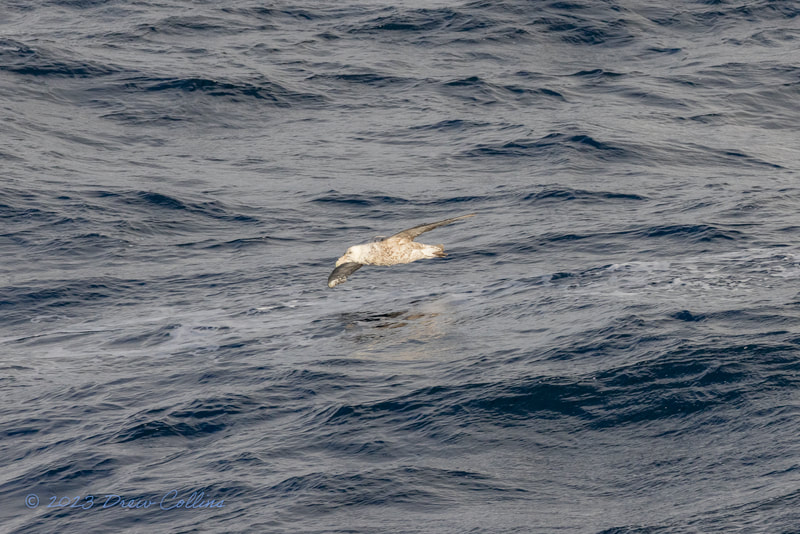



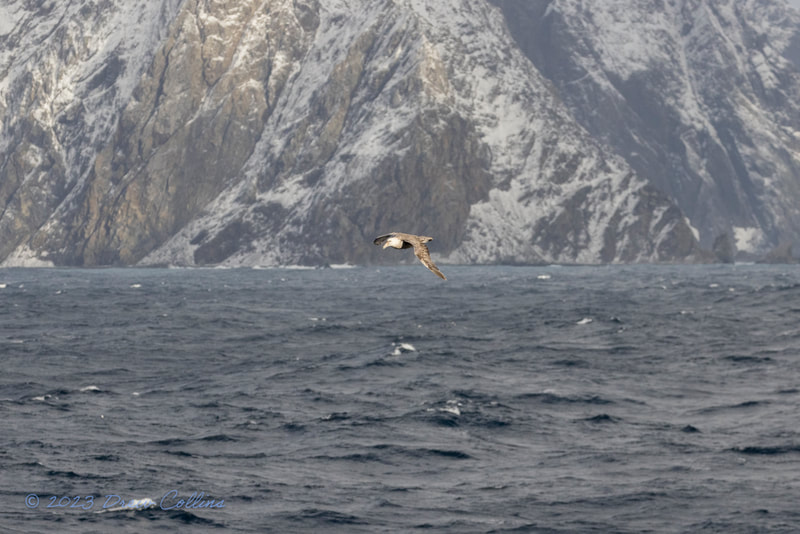


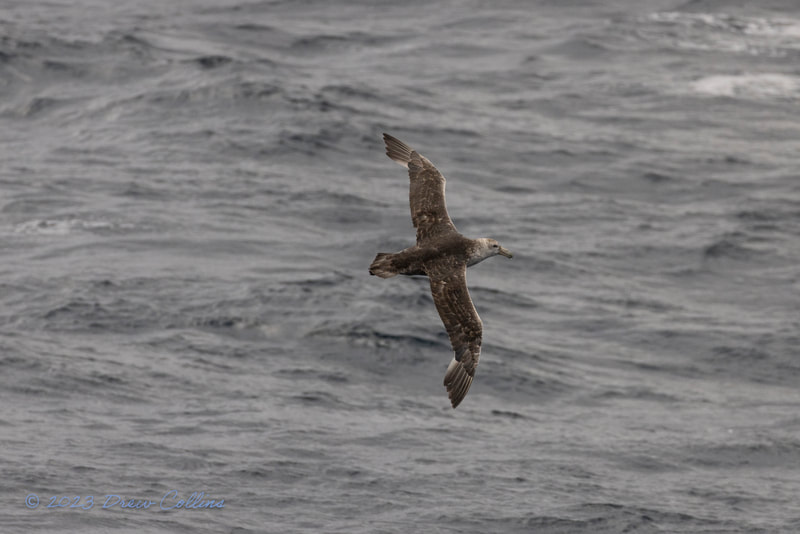














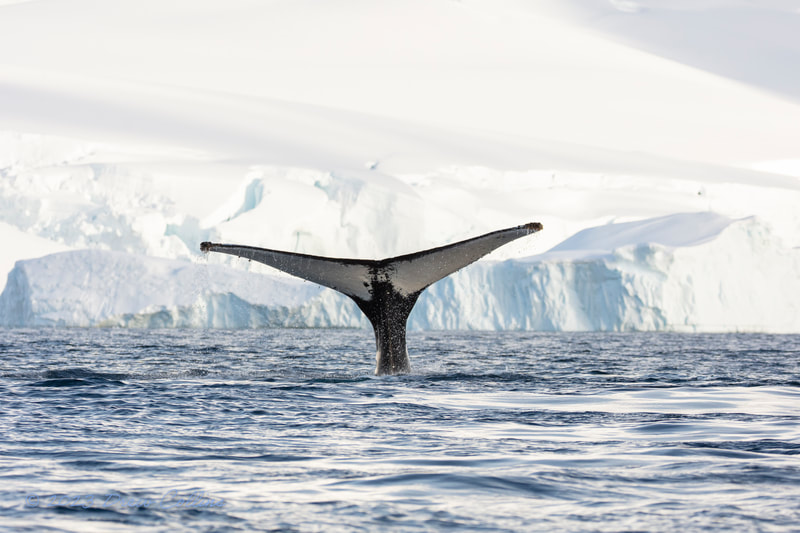










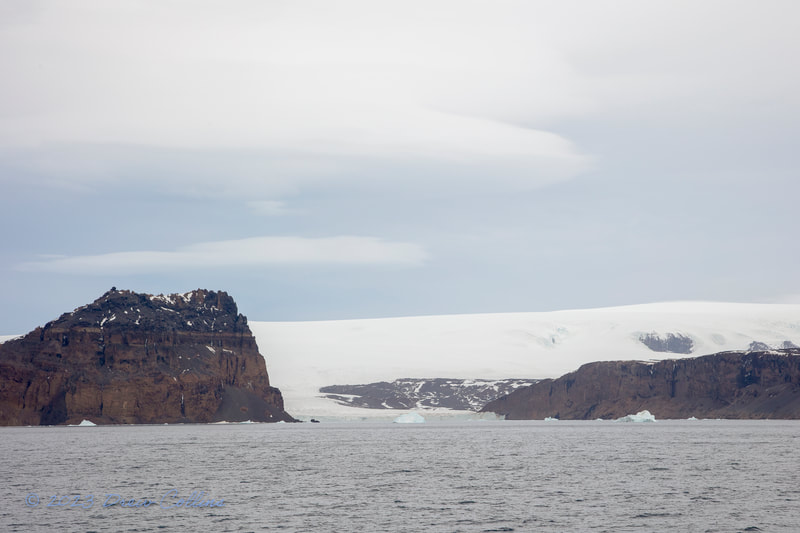


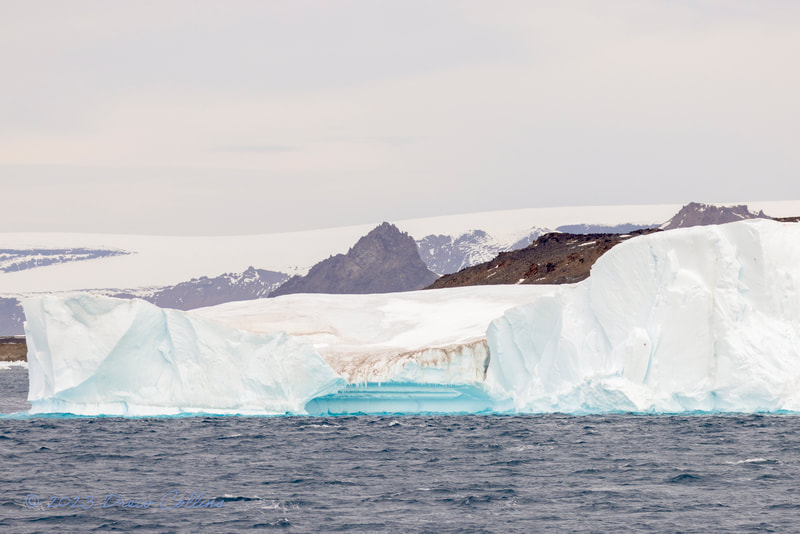
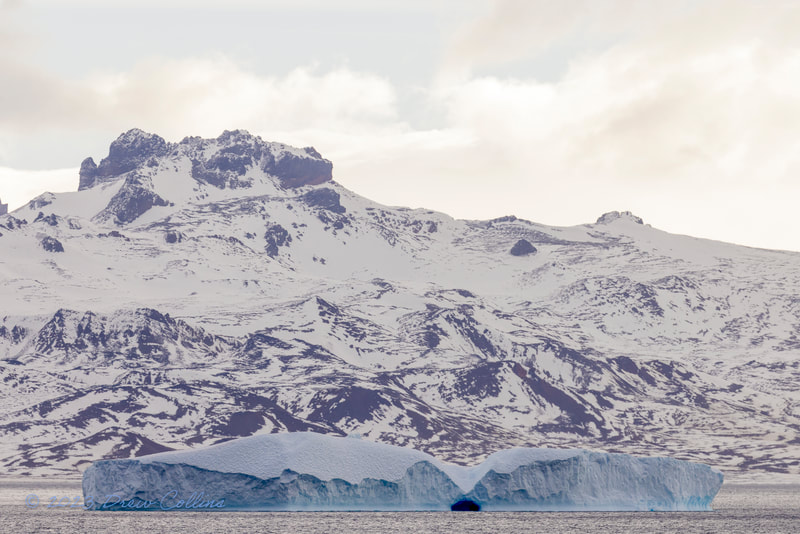




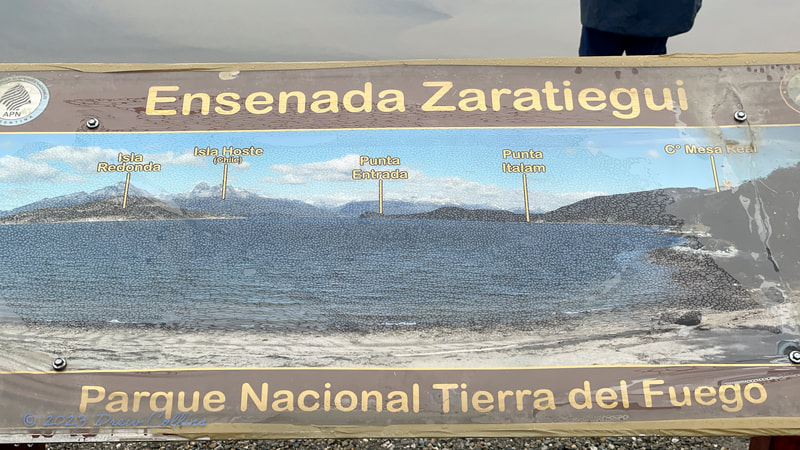









 RSS Feed
RSS Feed